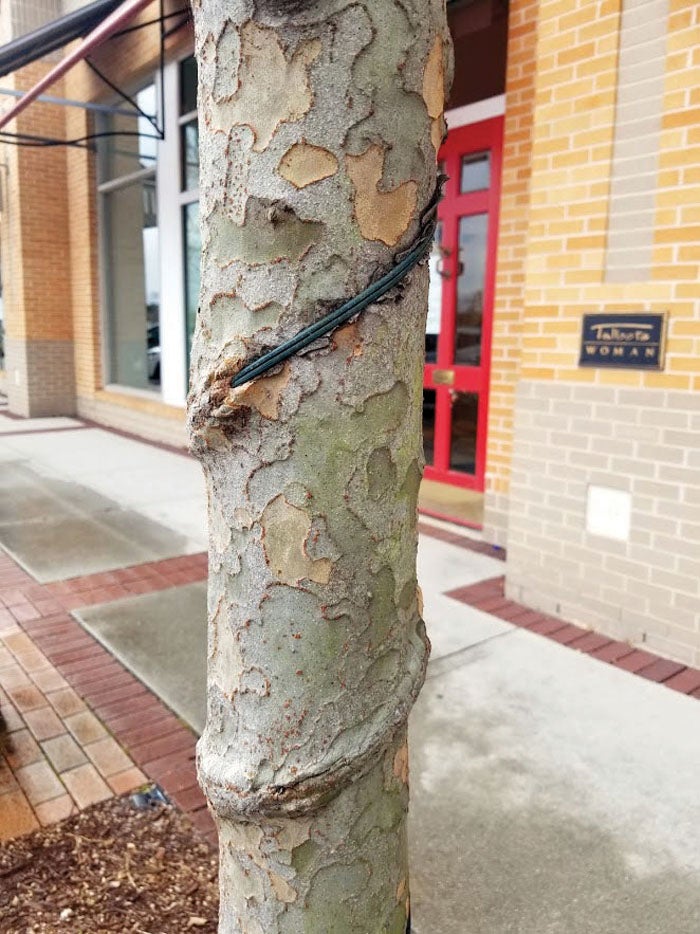Darrell Blackwelder: String trimmers, wire can cause bark damage
Published 12:00 am Saturday, July 1, 2023

- Wires around trees can cause bark damage.
At breakfast one morning, a friend was talking about mowing and the issue of using string trimmers to detail and finish his lawn. He liked to use string trimmers especially around trees because it was quick and easy.
I urged caution as bark damage from string trimmers, especially near the base of the tree, is a frequent killer of many types of trees, especially dogwoods. Damage to the cambium layer (food conducting tissues under the bark) often shows no physical evidence to the outside appearance of the trunk. However, serious bruising to the very thin and delicate cambium layer slowly limits food to roots and slowly kills the tree. String trimmer’s rotation speed is so fast, the outside damage goes unnoticed, but internally, the trees can be heavily damaged.
Repeated bumping of the trunks with lawn mowers and other when mowing spells a short-lived future for these plants.
Wires and ropes wrapped around trunks also damages young actively growing trees. The wire and synthetic roping materials can become embedded in just a few months causing serious damage to the tree’s vascular system. This type of damage only takes a few years to kill a tree.
External bark damage near the ground can go unnoticed for years. Open wounds provide the perfect entry source for fungi and bacteria to silently invade the vascular system of the tree initiating the tree’s gradual decline. Invading grass or mulch near the base of the tree often camouflages the wound disguising detection for years. After a few years, growth declines and the tree gradually becomes week and anemic. Weak and declining trees then become easy prey to secondary insects and other plant diseases expediting the eventual death.
Darrell Blackwelder is the retired horticulture agent and director with the North Carolina Cooperative Extension Service in Rowan County. Contact him at deblackw@ncsu.edu.



